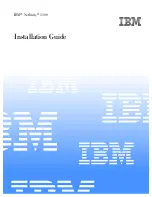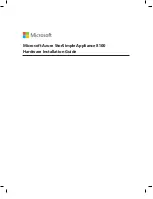
2-8
SPARC Enterprise Mx000 Servers Dynamic Reconfiguration User’s Guide • September 2007
Once the copy-destination board has been selected, the Solaris OS performs a
memory deletion on the selected user memory board.
Then, the kernel memory on the system board to be deleted is copied into memory
on the selected copy-destination system board. The system is suspended while the
copying is in progress. After all the memory is copied, the address space of the copy-
destination board is renamed to that of the kernel memory board being deleted.
Note –
If the address space of a system board is renamed by a copy-rename
operation, the change will persist across reboots of the domain. A
poweroff
(8)/
poweron
(8) cycle of the domain will reset the address space
assignments and remove the effects of one or more copy-rename operations.
(2) User Memory Board
A user memory board is a system board on which no kernel memory is loaded.
Before deleting user memory, the system attempts to swap out the physical pages to
the swap area. Sufficient swap space must be available for this operation to succeed.
(2.1) Locked Pages and ISM Pages
Some user pages are locked into memory and cannot be swapped out. These pages
receive special treatment by DR.
Intimate Shared Memory (ISM) pages are special user pages which are shared by all
processes. ISM pages are permanently locked and cannot be swapped out as
memory pages. ISM is usually used by Data Base Management System (DBMS)
software to achieve better performance.
Although locked pages cannot be swapped out, the system automatically moves
them to the memory on another system board to avoid any problem concerning the
pages. Note, however, that the deletion of user memory fails if there is not sufficient
free memory size on the remaining system boards to hold the relocated pages.
Although such moving of memory (called
save processing
) requires a certain length of
time, system operations can continue during save processing because it is executed
as a background task.
Note –
The Dynamic Intimate Shared Memory (DISM) is a feature that allows
applications to dynamically resize their ISM segments. Some applications use RCM
scripts to resize their DISM segments to assist DR. See the Solaris man page for
rcmscript
(4).
Summary of Contents for SPARC Enterprise M4000
Page 2: ......
Page 6: ......
Page 23: ...Preface xxi Reader s Comment Form ...
Page 90: ...3 28 SPARC Enterprise Mx000 Servers Dynamic Reconfiguration User s Guide September 2007 ...
Page 116: ...4 26 SPARC Enterprise Mx000 Servers Dynamic Reconfiguration User s Guide September 2007 ...
Page 152: ...A 36 SPARC Enterprise Mx000 Servers Dynamic Reconfiguration User s Guide September 2007 ...
Page 158: ...Glossary 4 SPARC Enterprise Mx000 Servers Dynamic Reconfiguration User s Guide September 2007 ...
Page 161: ......
















































